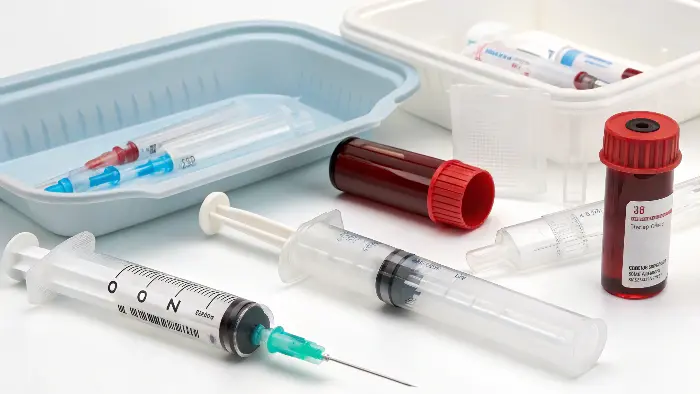Choosing the right material for a medical device is a high-stakes decision. A wrong move can lead to device failure, patient harm, and regulatory nightmares. The pressure to get it right is immense, with project timelines and budgets on the line. Understanding ISO 10993 is your key to navigating this complex landscape with confidence.
The best way to select a medical-grade plastic is by following the risk-based framework of ISO 10993. This international standard guides you in evaluating a material’s biocompatibility based on the device’s specific use, how long it will be in contact with the body, and the nature of that contact. This ensures the material is safe, performs as intended, and won’t cause adverse biological reactions.

This process might sound complicated, but it’s a logical path that protects both the patient and your project. It’s not about finding a material with a "medical-grade" sticker; it’s about proving a material is right for a very specific job. So, where do we begin? It all starts with understanding the standard that governs it all. Let’s break down the essentials, starting with the core of medical device safety: the ISO 10993 standard itself.
What is the ISO 10993 standard for medical devices?
You constantly hear "ISO 10993" in project meetings, but what does it actually mean for your design and budget? Ignoring or misunderstanding its requirements isn’t an option. It can lead to failed tests, costly redesigns, and complete market rejection. Let’s demystify this crucial standard so you can navigate your next medical project with total confidence.
ISO 10993 is an international standard series for the "Biological evaluation of medical devices." It provides a framework for assessing the biocompatibility of materials. It doesn’t tell you which material to use, but rather how to test and evaluate any potential material to ensure it is safe for its intended application and contact with the human body.

At its heart, ISO 10993 is all about risk management. It’s a series of standards designed to help us, as manufacturers and designers, protect patients from any potential biological risks arising from the use of medical devices. I remember a project manager, Alex, telling me he used to think of it as just a checklist. But it’s much more dynamic than that. It forces you to think critically about every material that comes into contact with a patient, directly or indirectly.
The Core Principle: Risk-Based Approach
The foundational document, ISO 10993-1, outlines the general principles. It requires you to categorize your device based on two key factors: the nature of body contact and the duration of contact. This initial categorization determines the specific biological tests you’ll need to perform. For example, a needle that briefly touches the skin has far fewer testing requirements than a long-term implant like a heart valve.
Device Categorization is Key
Understanding where your device fits is the first step. The standard breaks it down clearly.
| Category | Nature of Body Contact | Duration of Contact |
|---|---|---|
| Surface Device | Skin, Mucosal Membrane, Breached Surface | A – Limited (<24 hours) |
| External Communicating | Blood Path (indirect), Tissue, Bone, Dentin | B – Prolonged (24 hours to 30 days) |
| Implant Device | Tissue, Bone, Blood | C – Permanent (>30 days) |
Once you’ve categorized your device, ISO 10993-1 provides a table of potential biological effects to consider. For a permanent implant device, you’d need to evaluate everything from short-term effects like cytotoxicity and irritation to long-term effects like chronic toxicity and carcinogenicity. This systematic approach ensures no stone is left unturned. It’s our roadmap to proving safety.
What makes a plastic ‘medical-grade’?
The term "medical-grade" gets thrown around a lot, but it’s not a simple label you can trust at face value. Using a plastic that claims to be "medical" without proper validation is a huge risk. It could fail sterilization, leach harmful chemicals, or degrade unexpectedly. Understanding the strict criteria that truly qualify a plastic as medical-grade is essential for protecting your project and the end-user.
A "medical-grade" plastic is one that meets specific biocompatibility, quality, and regulatory requirements, often proven through ISO 10993 testing. These materials offer high purity, consistency in formulation, and are manufactured under strict controls to ensure they are safe for medical applications and won’t leach harmful substances when in contact with the body.

When I work with project managers like Alex, I always stress that "medical-grade" is more of a commitment than a simple definition. It’s a promise from the material supplier that the plastic resin is produced with a level of control and documentation far beyond that of a standard commodity plastic. This commitment covers several critical areas.
Biocompatibility and ISO 10993 Compliance
This is the most obvious requirement. The raw material supplier must have data, often a Master File submitted to regulatory bodies like the FDA, demonstrating that the material has passed the necessary ISO 10993 tests for a range of applications. For example, a resin might be certified for limited contact with intact skin (Class I) or for more invasive, long-term contact (Class VI). This pre-testing gives us a huge head start, but remember, the final device itself must still be evaluated.
Manufacturing Controls and Traceability
A true medical-grade resin is made in a highly controlled environment. The supplier must guarantee that no unapproved substances, like certain plasticizers or colorants, are introduced during production. More importantly, they must have a locked-in formulation. This means they cannot change the recipe—not even a minor additive—without notifying their customers well in advance, often 12 to 24 months ahead of time. This "no-change" agreement is critical. It ensures that the device we qualify today will be made from the exact same material five years from now. Full traceability from the raw resin batch to the final molded part is non-negotiable.
Chemical Resistance and Sterilization Compatibility
A plastic isn’t useful in a medical setting if it can’t be sterilized. A medical-grade plastic must be able to withstand common sterilization methods—like gamma radiation, ethylene oxide (EtO), or autoclave (steam)—without degrading, discoloring, or losing its mechanical properties. The material must also resist attack from cleaning agents and bodily fluids. This is where the supplier’s detailed datasheets become invaluable, providing the evidence we need to make an informed choice.
What is the best plastic for medical devices?
With so many options available, trying to choose the single "best" plastic can feel impossible. Making a quick decision based on one factor, like cost or strength, can backfire. The wrong choice could compromise the device’s function, safety, or manufacturability, sending you right back to the drawing board. The "best" plastic is the one that perfectly matches your specific device’s unique requirements.
There is no single "best" plastic for all medical devices. The ideal choice depends on factors like biocompatibility requirements (ISO 10993), sterilization method, chemical resistance, mechanical properties, and cost. Common high-performers include Polycarbonate (PC) for its strength and clarity, and Polypropylene (PP) for its cost-effectiveness and chemical resistance in disposable items.

The search for the "best" material is really a process of elimination. You start with a wide range of possibilities and narrow them down by asking the right questions. I often walk clients through a mental checklist. What does this part need to do? How will it be cleaned? Who will it touch, and for how long? The answers guide us to the right family of materials.
A Comparison of Common Medical Plastics
To help you navigate the options, I’ve put together a table comparing some of the most common plastics we use for medical device molding. This isn’t an exhaustive list, but it covers the workhorses of the industry.
| Material | Key Properties | Common Applications | Sterilization Methods |
|---|---|---|---|
| Polycarbonate (PC) | High strength, stiffness, clarity, impact resistance | Housings, connectors, surgical instruments, IV components | EtO, Gamma, E-beam |
| Polypropylene (PP) | Excellent chemical resistance, low cost, flexible | Syringes, disposable containers, sutures, fabrics | Autoclave, EtO |
| PEEK | Superior strength, biocompatible, chemical/temp resistance | Spinal implants, trauma fixation, dental instruments | All methods |
| ABS | Good stiffness and impact strength, easy to process | Non-implantable housings, casings, diagnostic components | EtO, Gamma |
| Silicone (LSR) | Excellent biocompatibility, flexible, soft, temp resistant | Catheters, tubing, seals, respiratory masks, wearables | All methods |
| PVC | Flexible or rigid, clear, low cost | IV bags and tubing, blood bags, oxygen masks | EtO, Gamma (requires stabilizer) |
| UHMWPE | Extremely high impact strength and wear resistance | Orthopedic implants (hip/knee joints), surgical cables | Gamma, EtO |
Matching the Material to the Application
As you can see, the choice is all about trade-offs.
- For a disposable syringe, cost and chemical resistance are paramount. Medical-grade Polypropylene (PP) is the perfect fit. It’s inexpensive and holds up well to the contents, and it can be sterilized with EtO.
- For a clear housing on a diagnostic machine, you need strength, impact resistance, and transparency. Polycarbonate (PC) is an excellent choice. It’s tough enough to protect the internal electronics and can be easily sterilized.
- For a long-term spinal implant, there is no room for compromise. You need the absolute best in strength, biocompatibility, and resistance to bodily fluids. This is where a high-performance polymer like PEEK justifies its high cost.
I remember a project where we had to select a material for a handheld surgical tool. The team was leaning toward ABS for its cost, but the device required repeated steam sterilization. ABS would have warped and failed after just a few cycles. We switched to a steam-sterilizable grade of Polycarbonate. It increased the material cost slightly, but it ensured the device was safe and reliable for its entire intended lifespan. That’s the kind of critical thinking this process demands.
Conclusion
Selecting the right medical-grade plastic is a critical process governed by the ISO 10993 standard. There is no single "best" material; the ideal choice is always specific to the application. It requires a careful balance of biocompatibility, physical properties, sterilization compatibility, and cost. Partnering with an experienced molding expert can help you navigate these complexities and ensure your device is safe, effective, and successful.
